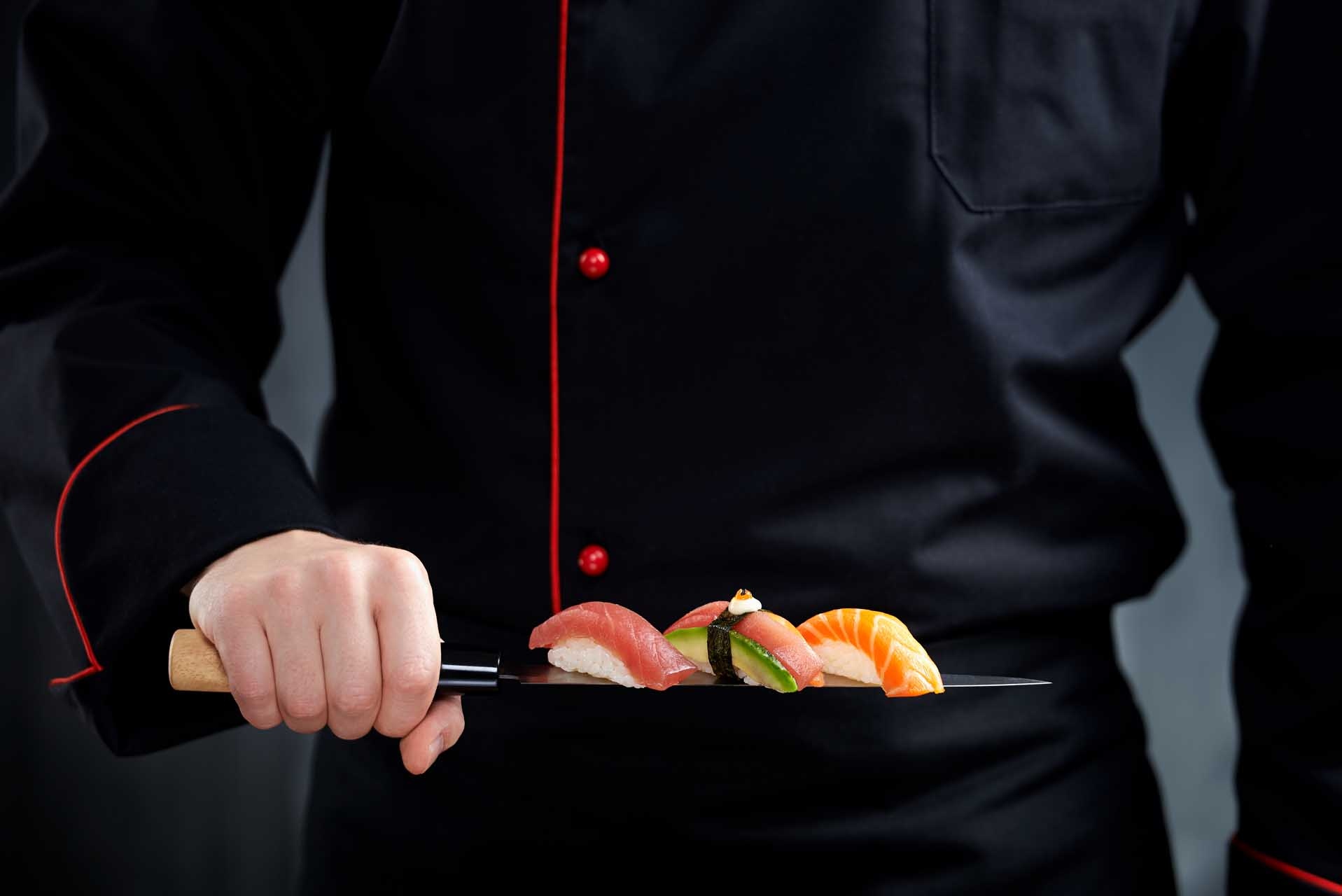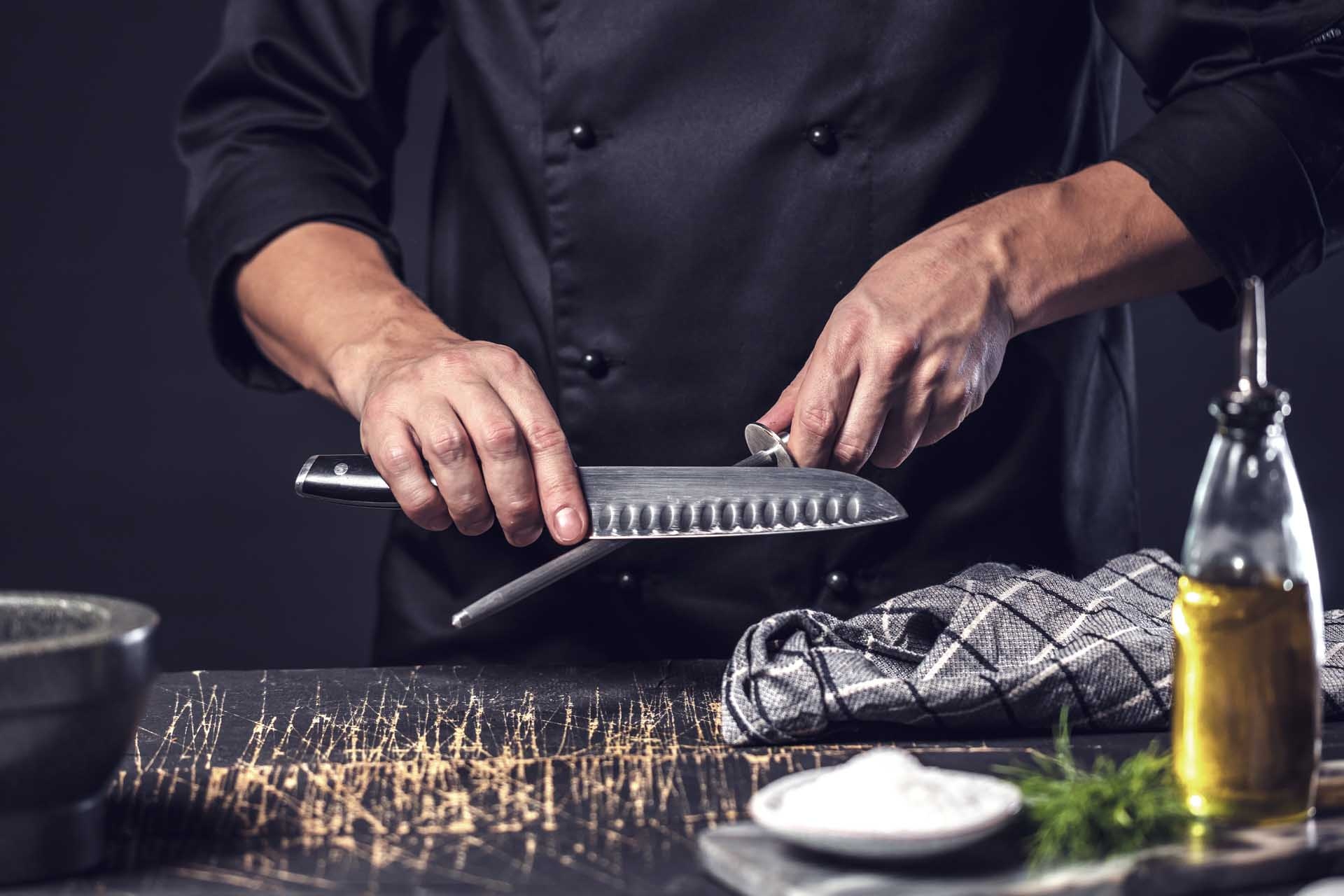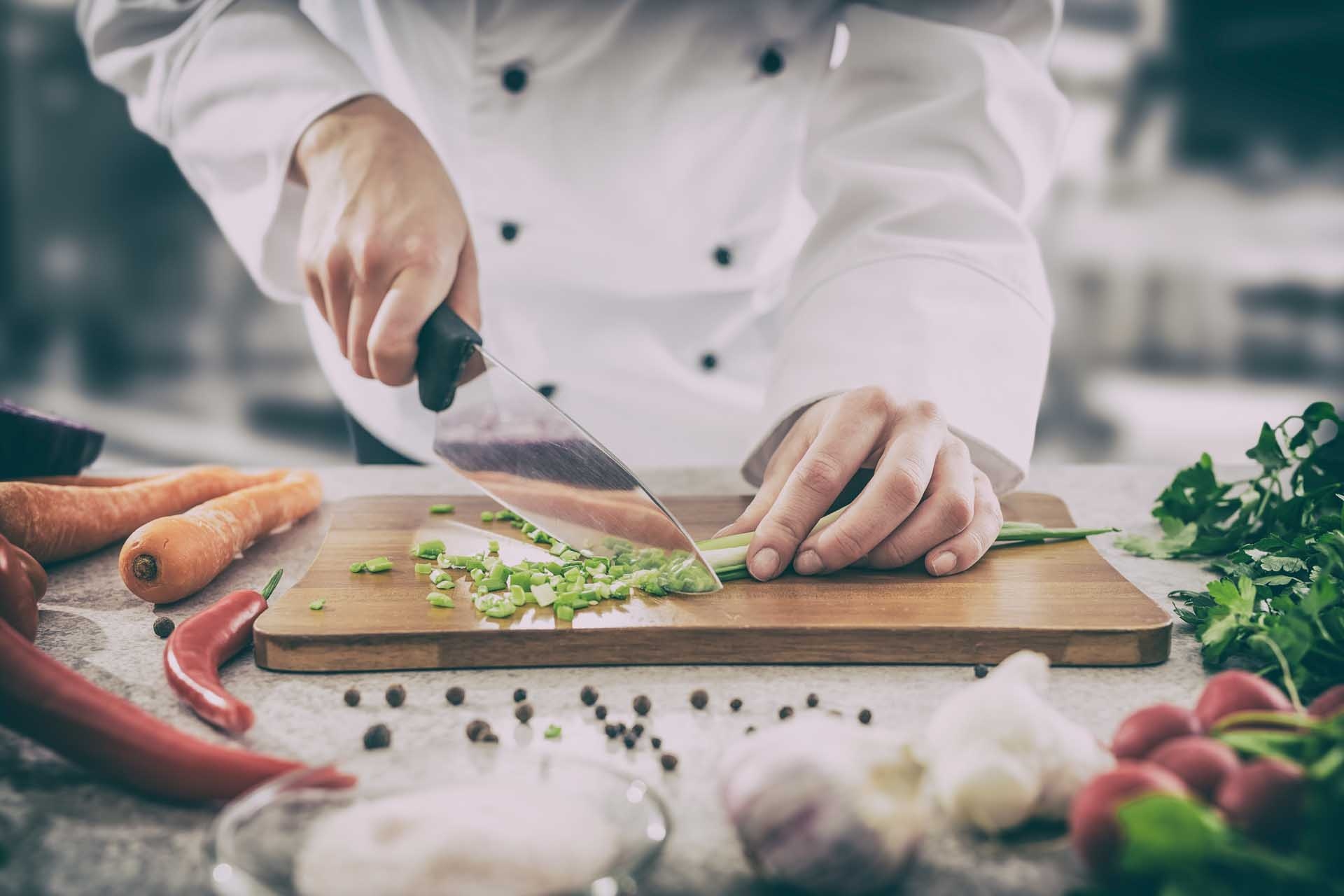
On a knife-edge – find your perfect knife!
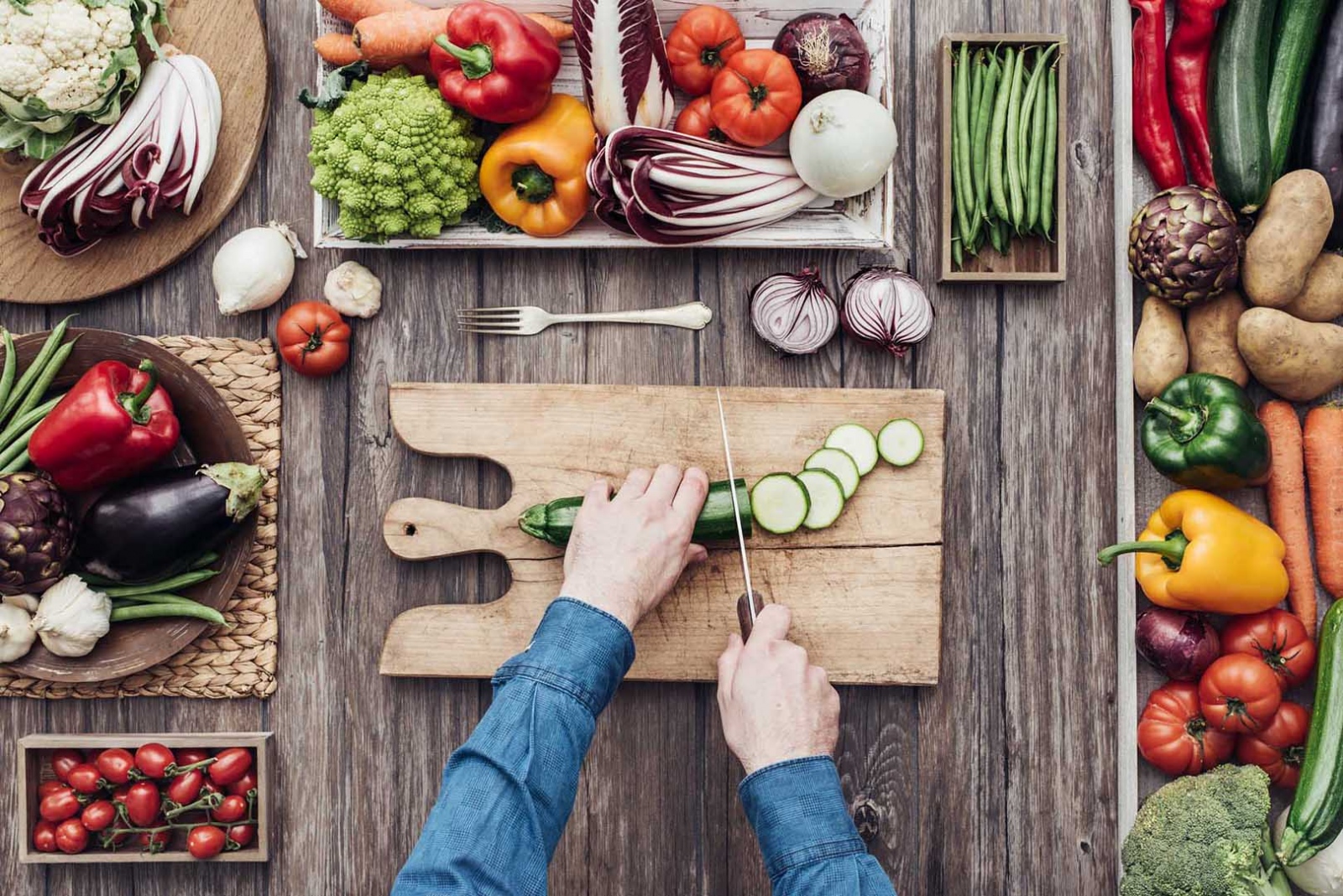
Good kitchen knives are the most essential tools in cooking – it’s no wonder chefs truly treasure them. Some people go for German steel, others seek out Japanese knives. What’s the difference and why should you care? Read on to find out!
There are three main differences between the German and Japanese traditions:
- German knives are generally made of softer steel, making them thicker, heavier and more robust
- Japanese knives are famed for holding their edge longer, but this quality also makes sharpening them more difficult
- Japanese knives have an even weight distribution, whereas the center of weight for German knives is closer to their handle
The sharpest tool in the box
Contrary to popular belief, it’s much easier to hurt yourself with a dull knife than with a sharp one. Dull knives are almost tearing apart ingredients instead of cutting through them, and because of this, a dull knife can easily slip and run into your hand or fingers. Unfortunately, this can result in more serious injury, as a cut from a dull knife can damage tissue to a greater degree. Always keep your knives sharp, as they are easier to work with, and less dangerous.
Watch your hand
It’s important to have a knife that’s easy to use. If it’s too heavy, or its handle is uncomfortable, or the edge is too thick, it can result in a less than rewarding cooking experience. Always try out a knife before buying it! Quality knives come with a price, but also durability! You might not need another one for a long time. Make sure to find the most comfortable knife for you.
Dress for the occasion!
For different preparation processes different knives might come in handy. Here’s a list of specific types of knives to know your way around the kitchen!
Have a chef’s knife with an edge of around 20 centimeters in length; this should be more than enough in a domestic environment. This is the knife for most of the preparation processes: cutting meat, slicing vegetables and fruits. The chef’s knife is going to become your best friend in kitchen – make sure to keep it clean and sharp.
Next, we recommend having one or two knives with serrated blades, in different sizes. The bigger one can be used for cutting bread, whole pieces of roasted meat, and the smaller will be perfect for cutting juicier fruits, such as tomatoes, eggplants or apples.
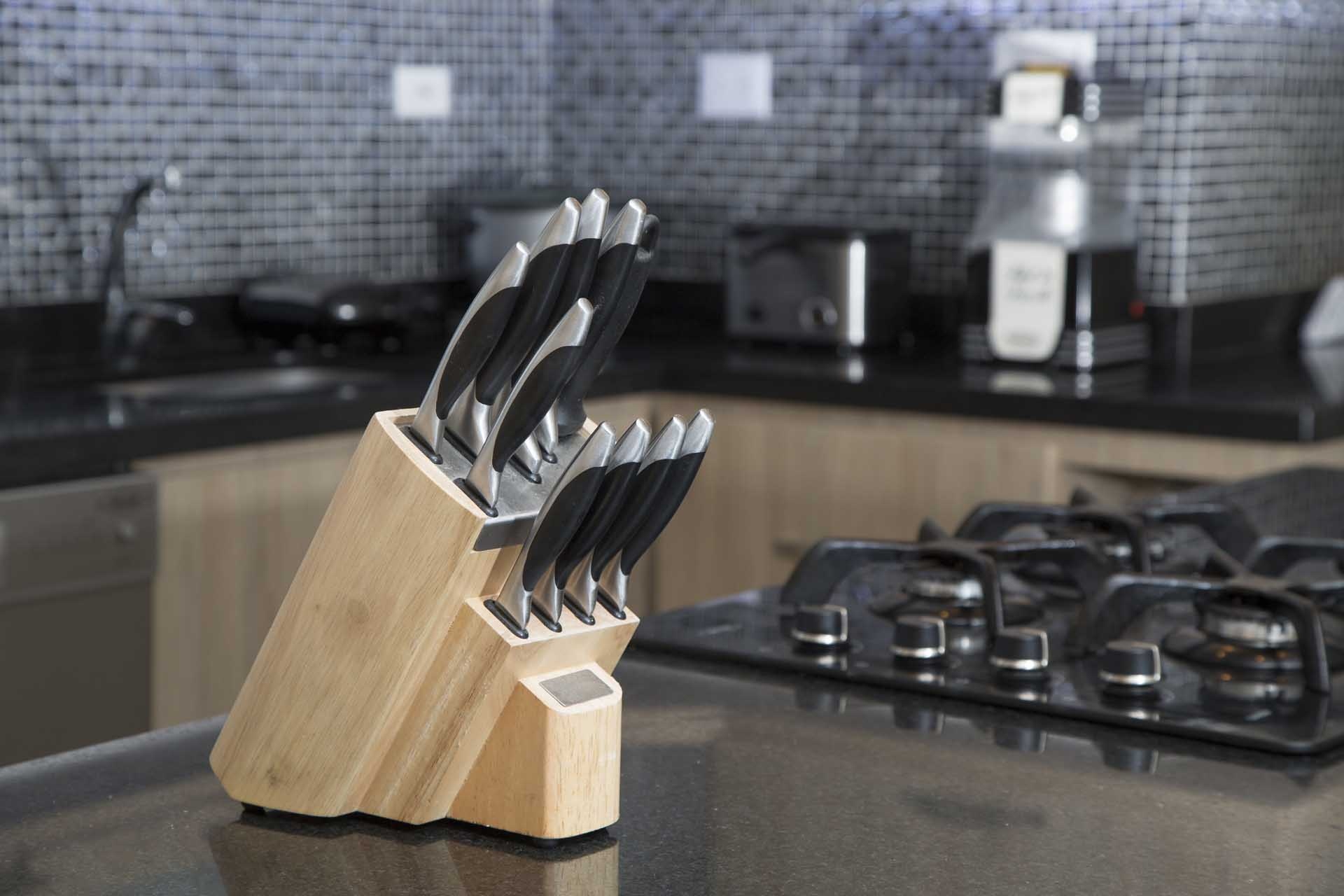
If you’re into fish, you should think about buying a so-called santoku knife. It’s a traditional Japanese design with a French point that results in precise slicing and mincing. Most santoku knives incorporate a „scalloped” side or Granton edge, allowing an ease of cutting and better food release.
It’s also important to have a smaller, slimmer knife with a shorter edge. Apart from peeling smaller vegetables and fruits with ease, these knives are perfect for trimming meat and smaller fish such as trout or ruffe.
A clean cut
To keep your knives sharp as long as possible, there’s only one thing to remember when cleaning time comes: hold under cold tap water with a little detergent. Don’t ever put them in the dishwasher! These machines alternate between cold and hot water, which is the easiest way to damage your knife.
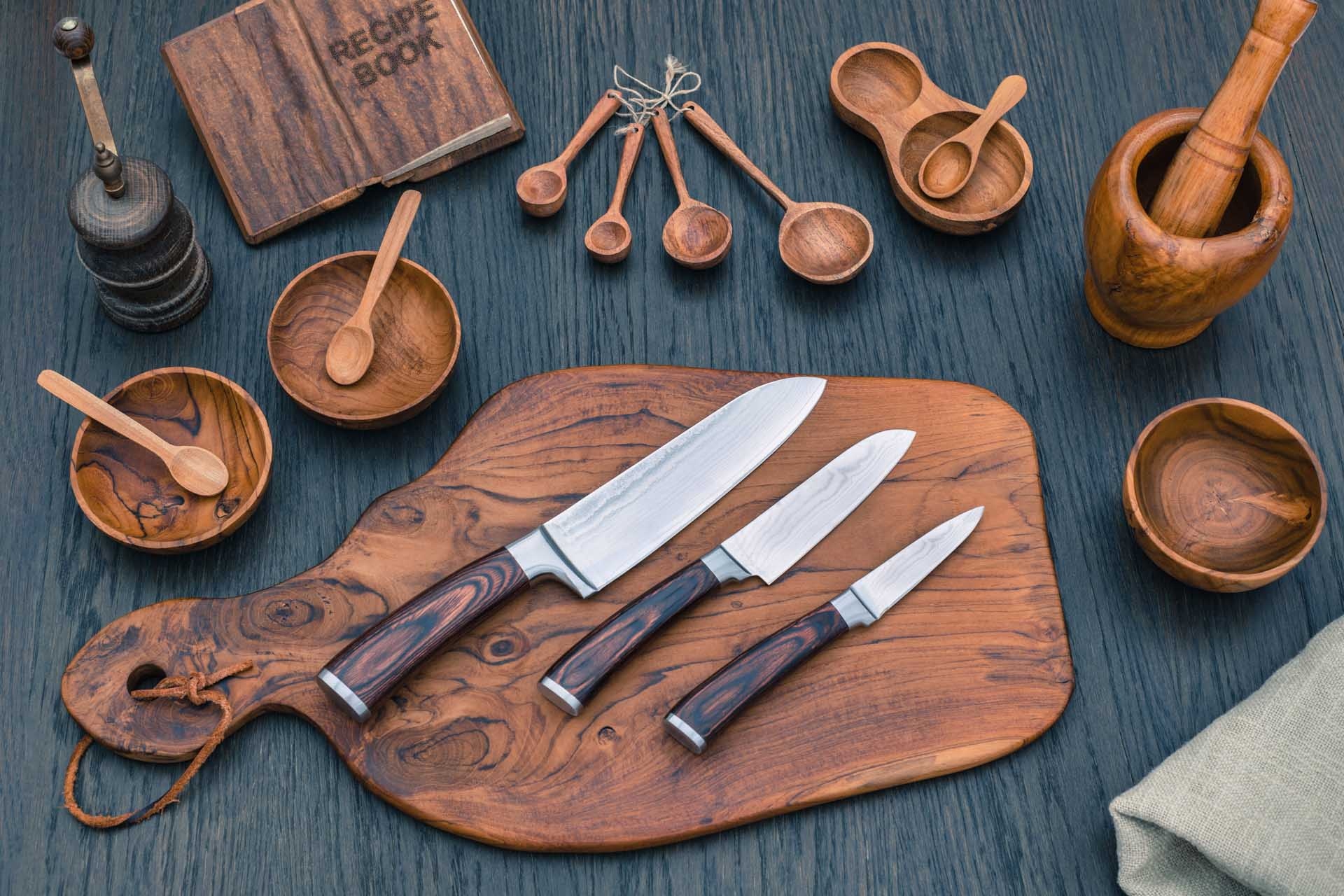
Everyone has a different grip on knives – meaning that it’s important to try out any knife you’re about to buy. At the Kitchen Show, you will have the opportunity to discover a number of brands, manufacturers and kitchen knives. Come and take a look, and find the perfect knife for your kitchen!

